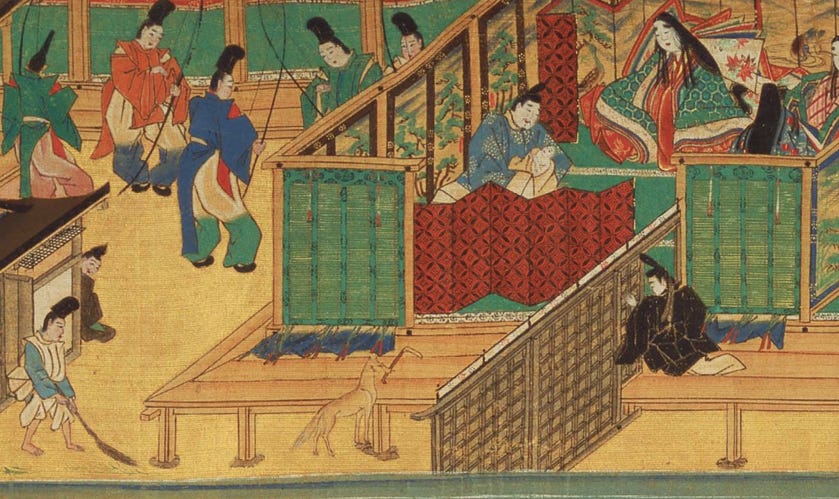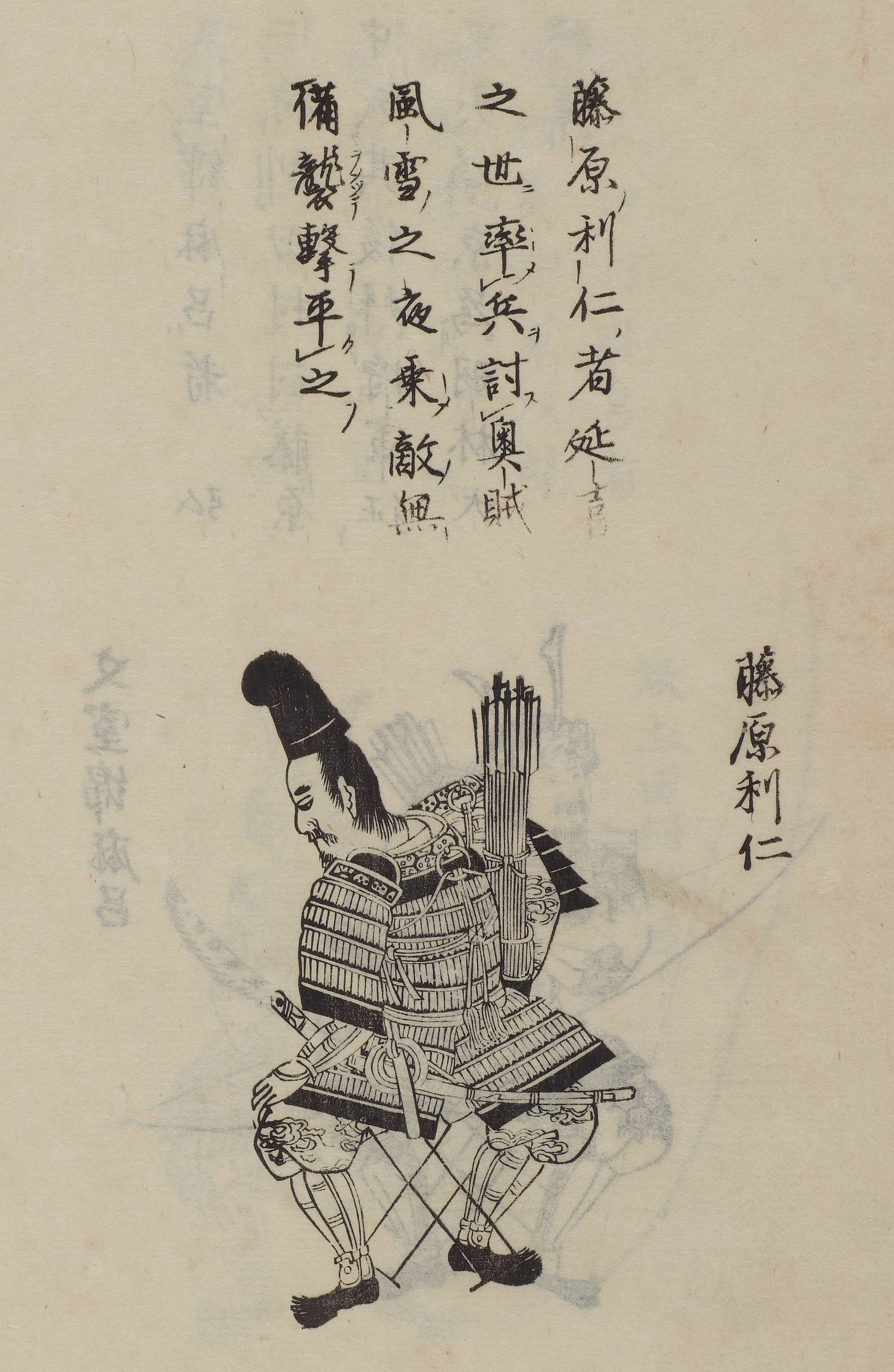From myths to techniques: Fujiwara, Kuki, Gyokko, and Kotō ...
From the Fujiwara clan to the evolution of Ninjutsu and Japanese Martial Arts.
The mythological origins of the Fujiwara clan trace back to Ame no Koyane no Mikoto (天児屋根命), but their earthly roots lie within the Nakatomi clan (中臣氏). Specifically, they begin with Nakatomi Kamatari (中臣藤原氏), born in 614 and initially named Kamako (鎌子). According to legend, at his birth, a fox delivered a sickle (鎌). Shortly before his death in 669, he adopted the name Fujiwara Kamatari, becoming the founder of the Fujiwara clan (藤原氏).
In 645, Kamatari, together with Prince Nakano Ōe (中大兄皇子), staged a coup and assassinated Soga no Iruka (蘇我入鹿). This pivotal event is tied to two significant outcomes. First, following Iruka’s death, Kamatari received the Amatsu Tatara Hibun (天津蹈鞴秘文)1. Second, the act is associated with the divination method Kotsujiura (狐辻占), which involved inscribing "狐狐狐" (fox, fox, fox) at the four cardinal directions of a crossroads. At dusk, this ritual was believed to predict good or bad fortune2.
The Amatsu Tatara texts were not exclusive to the Nakatomi family. Other lineages, such as the Otomo (大伴氏) and Mononobe (物部氏) clans, also inherited these transmissions. This succession line, referred to as Nakatomi Amatsu Tatara (中臣天津踏鞴), was eventually passed to Yakushimaru Kurando Ryūshin (薬師丸蔵人隆真), the founder of the Kuki family (九鬼家). Thus, the Kuki family became direct descendants of the Nakatomi Fujiwara line (中臣藤原).
Kamatari and the evolution of Martial Arts: Shōshō ryū and beyond
Kamatari is also linked to the martial art style Shōshō Ryū Yawara (諸賞流和). Originally, he named the style Koden Ryū (狐伝流), or "The Transmission of the Fox," possibly a reference to the divine fox that appeared at his birth and the methods of divination mentioned earlier.
A scroll from the Shōshō Ryū contains a brief description of its first two generations:
...Taishokkan3 Kamatari received a sickle and a secret lesson from a divine fox. His skills in swordsmanship and spiritual techniques were unparalleled, but over time, the secrets of the style were lost. When General Tamura Toshimune4 defeated the Emishi, the Bodhisattva Kanzeon at Kyozumi Temple entrusted him with the school, which persisted within warrior families under the name Musokanze Ryū5...
Although now recognized primarily as a style of Jūjutsu (柔術), Shōshō Ryū boasts a broad and varied curriculum. It includes unarmed combat (和), rope techniques (縄術), torch (松明), esoteric protection methods (九字護身法), and more. Notably, the style is renowned for its Shurikenjutsu (手裏剣術), or the use of small throwing blades.
One of Kamatari’s descendants, Fujiwara Uona (藤原魚名, 721–783)6, sought to improve weapons. He commissioned the crafting of a naginata (薙刀) modeled after the Chinese bisento (眉尖刀), rendering the hoko (矛) spear obsolete. Additionally, stone-throwing techniques (投石) evolved into the throwing of iron plates (teppan nage, 鉄板投)7.
Connections to Gyokko ryū and Kotō ryū
The adaptation of the naginata and the use of iron plates parallels the documented transmission of techniques in the Gyokko Ryū and Kotō Ryū. According to their records:
...Yō Gyokko (姚玉虎) mastered Kosshijutsu (骨指術), Hichōjutsu (飛鳥術), and Senban Nagejutsu (銛盤投術). He passed these techniques down through generations, eventually to Chō Buren (張武連), who taught his son Bushō (武勝), a general from Baekje (百済). After being defeated, Bushō fled to Japan, introducing Kosshijutsu, Hichōjutsu, Senban Nagejutsu, Naginatajutsu (薙刀術), the eighteen techniques (十八型), and Chinese Tōda (唐打)...
Bushō’s arrival in Japan, prior to 758 (the birth year of Sakanoue Tamuramaro), aligns with the evolution of both the naginata and iron plate throwing (teppan nage). The senban (銛盤) refers to a specific type of metal plate used in the Togakure Ryū (戸隠流) and Shōshō/Koden Ryū (諸賞/狐伝流)8.
Links to the Kuki family
The connection between these techniques and the Kuki family is further supported by the Ryūko Nikan scroll (九鬼神伝龍虎二巻), which states:
...The Kuki family (九鬼) became warriors and learned vital point techniques (Kyūsho, 急所) and methods of capture and striking (Bakuda no Jutsu, 縛打の術) from a Chinese immigrant named Chō Bushō (張武相). These techniques enhanced control methods (Hojutsu, 捕術). Jūjutsu (柔術) was later added to these secrets9...
Both transmissions refer to a Chinese immigrant named Chō Bushō (張武相), with identical pronunciations in the characters for "Bushō" (勝 = 相).
The use of foxes in martial lore
Eight generations after Kamatari (though not in the direct line of Amatsu Tatara transmission), a Fujiwara clan member used foxes as spiritual tools. This practice became closely associated with aspects of ninjutsu in the Togakushi (戸隠山) and Iizuna (飯綱山) mountain regions10.
Fujiwara Toshihito and Heian legends
Further down the northern Fujiwara line of Uona (藤原北家魚名流), we find Fujiwara Toshihito (藤原利仁), who lived during the 10th to 11th centuries. Toshihito appears in the Konjaku Monogatari (今昔物語), volume 26, in a story titled:
"Chapter 17: The Young General Toshihito travels from Kyoto to Tsuruga with a fifth-rank Samurai"
In this tale, Toshihito hosts a banquet in Tsuruga, offering porridge to his guest. During their journey, Toshihito encounters a fox at Mitsuhama and declares:
"This seems like a good messenger."
He captures the fox and uses it to send a message to his wife. The fox appears to Toshihito’s wife during the "hour of the dog," relaying the message exactly as instructed.
This episode illustrates the belief in foxes as messengers, foreshadowing the later development of kitsune-tsukai (狐使い), practitioners who controlled foxes for possession or communication. These practices were linked to the esoteric Iizuna Method (飯綱の法)11 and the Atago Method (愛宕の法)12, both of which were prominent in mountain temple traditions, such as those at Hakuun Temple (白雲寺).
The Atago method appeared at Hakuun Temple (白雲寺) in Atago Mountain in Musashi Province (武蔵国). A temple where Sakanoue Tamurarmo enshrined the Shogun Jizo (勝軍地蔵), a protective deity who had great fame among warriors.
The legacy of Kurama Temple
Toshihito is also associated with the subjugation of bandits, as recorded in‘The origin story of the hidden temple of Kurama’ or Kurama Gaiji Engi (鞍馬蓋寺縁起). His prayers to Bishamonten (毘沙門天) at Kurama Temple inspired a strategy to defeat the infamous Kuramune and Kurayasu13.
Kurama Temple holds a key role in the teachings of the Kuki family, housing the Kukishinden Ryūko Nikan and the Tenshin Hyōhō Kakkiron (天真兵法心剣活機論), essential texts in the legacy of Japanese martial arts.
NOTES:








